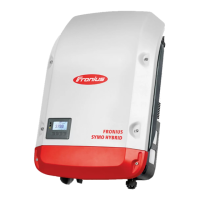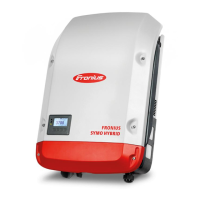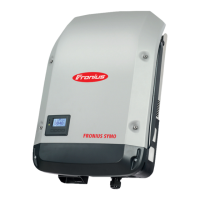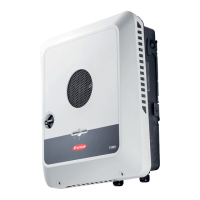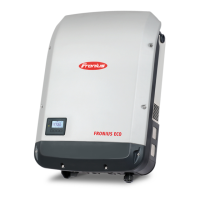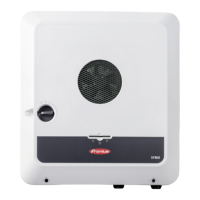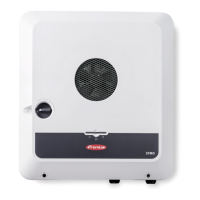Settings – Energy Manager
Energy manage-
ment
Own consumption optimisation
The Fronius hybrid inverter always controls the system by adjusting it in line with the tar-
get value set at the metering point. In "Automatic" operating mode (factory setting), the
system is adjusted so that 0 W is achieved at the feed-in point (maximum self-consump-
tion).
The target value still applies even if another source feeds energy in at this metering
point. However, in this case:
- The Fronius Smart Meter must be installed at the feed-in point
- The option that allows the battery to be charged by another producer must be activ-
ated (see Battery management section on page 105)
The self-consumption optimisation has a lower priority than the battery control paramet-
ers.
Own consumption optimisation
Option for selecting automatic or manual self-consumption optimisation
Target value at the metering point
If you opt for "manual" under "Own consumption optimisation", you can select the target
value at the metering point and choose between "Consumption" and "Feed-in" here.
Emergency power
Operating mode
"Automatic" or "Off" can be selected for emergency power mode.
The emergency power functionality can only be activated once the required IO assign-
ments have been configured for emergency power. The meter must be installed at the
feed-in point and configured.
Remaining battery capacity
If emergency power mode is set to "Auto", during grid-connected operation energy is
drawn from the battery until the battery capacity specified here is reached.
SOC warning level
A warning is output when the residual capacity of the battery specified here is reached in
emergency power mode
Energy manage-
ment examples
These examples illustrate possible energy flows. Efficiency values have not been taken
into account.
Battery system example
PV system to Fronius Symo Hybrid: 1000 W
Household consumption: 500 W
Target value set at feed-in point: 0 W
Power to the battery: 500 W
Power output (AC) by inverter: 500 W
102
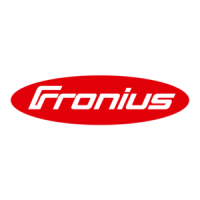
